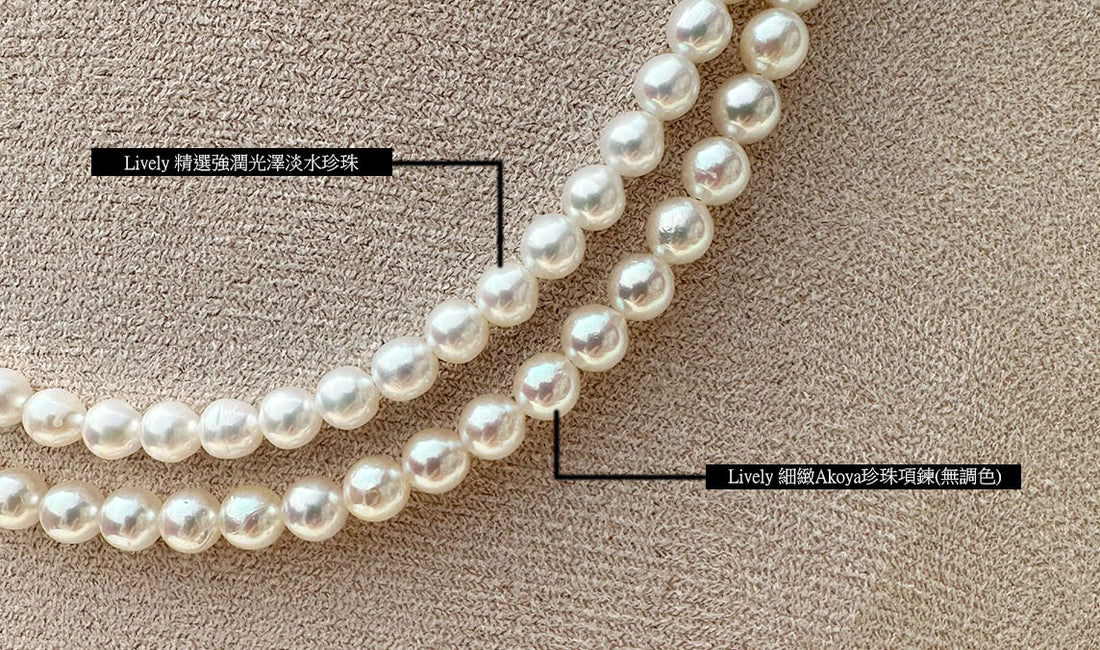The Elegance of Pearls: How Luster Defines Quality
The beauty and elegance of a pearl largely depend on its luster. When choosing pearls, luster is the most important factor to consider, as it directly influences how beautiful the pearl looks and how valuable it is. Knowing how to assess luster and understanding the differences between various types of pearls can help you select the best quality.
1. Why Akoya Pearls Shine Bright: The "Little Lightbulbs"
Akoya pearls are famous for their brilliant, mirror-like luster, which has earned them the nickname "little lightbulbs." Their bright shine sets them apart from other types of pearls, especially in natural light. This exceptional luster comes from the way the nacre (the layers of material that make up the pearl) is tightly packed, allowing light to reflect multiple times, creating a stunning, reflective surface. This is why Akoya pearls are among the most sought-after pearls on the market.

2. Luster Defines Quality: Freshwater vs. Saltwater Pearls
The luster of a pearl is largely determined by how the nacre layers are arranged. Saltwater pearls, like Akoya, have a more compact nacre structure, which reflects light more intensely, giving them a higher luster. On the other hand, freshwater pearls have a looser nacre structure, resulting in a softer, more subtle shine. This difference often makes saltwater pearls more desirable and valuable than freshwater pearls, which usually have a lower price.
3. How to Judge Pearl Luster: Key Tips for Choosing Quality Pearls
To judge the luster of a pearl, place it under natural light and see if the reflections on its surface are sharp and bright. A high-quality pearl should reflect objects around it as clearly as a mirror. This clear, bright reflection is a key sign of superior luster. When buying pearls, it's a good idea to bring an Akoya pearl you already own to compare with the new ones you're considering. This way, you can ensure the new pearls have a similar or even better luster.
4. Designer Advice: Choose Japanese Akoya Pearls and Trusted Sellers
Akoya pearls come from a specific type of oyster, so any pearl produced by Akoya oysters is considered an Akoya pearl. However, pearls from Japan are often seen as superior because of their thicker nacre and outstanding luster. Lively’s Akoya Pearl Collection features Japanese Akoya pearls known for their mirror-like luster, making them a top recommendation for those seeking high-quality, elegant pearls.
5. The Rise of Freshwater Pearls: How to Tell Them Apart
Thanks to modern techniques, freshwater pearls can now be treated to achieve a luster that rivals Akoya pearls. However, these treatments must be done by reputable sellers, as poor-quality treatments can cause the luster to fade quickly. Lively’s Lumiere Freshwater Pearl Collection offers freshwater pearls with a brilliant luster that can compare to Akoya pearls and maintain their shine longer, making them a great choice for those looking for beautiful pearls.
Conclusion
The elegance of pearls comes from nature's craftsmanship, with luster being the most crucial factor in determining quality. Whether you're choosing Akoya saltwater pearls or treated freshwater pearls, this guide aims to help you find the most valuable pearls. Remember, the brighter and clearer the luster, the higher the quality and value of the pearl.

